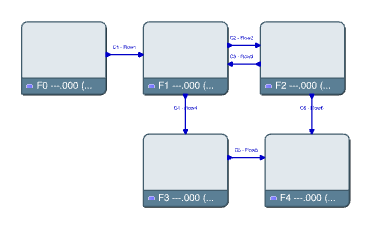 -
From the Diagram section of the action bar, click Create Execution Function Chain
 . .
-
In the tree, select the function instance F0.
You can also select the function instance in the main view.
-
In the Sheet dialog box, enter a name for the sheet.
-
In the View dialog box, enter a name for the diagram view.
A diagram view is created and the
function instance F0 is placed.  -
In the diagram view, select the
function instance F0.
The function instance F1
is placed. 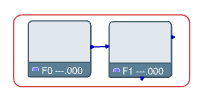 -
Select the
function instance F1.
- In the Leaves of Function dialog box, select the ports to be connected.
F2 and
F3 function instances are placed since they are both connected to F1.  - Select the function instance F2.
The F4 function instance is placed. 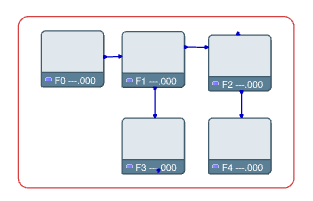 - In the dialog box, click Create New Occurrence and select F1.
A new occurrence of the function instance F1 is created. 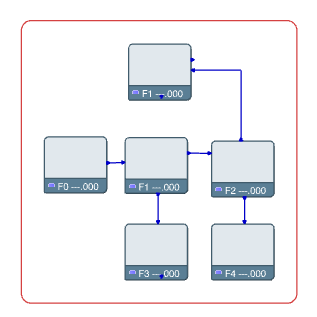 - Select the new occurrence of F1, click Select Existing Occurrence and then, select F2.
A connection between the new occurrence of F1 and F2 is created. 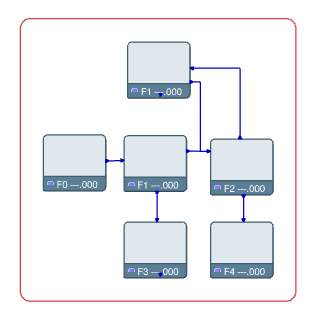 - Click Create New Occurrence and then, select F3.
A new occurrence of F3 is created and connected to F1. 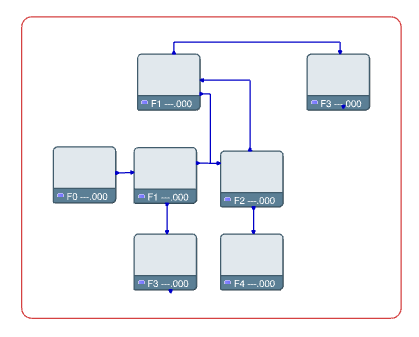 - Select the new occurrence of F3, click Select Existing Occurrence and then, select F4.
The connection between the new occurrence of F3 and F4 is created. 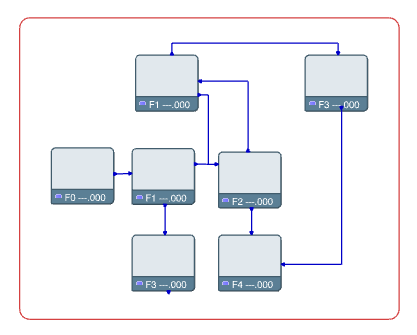 - Double-click the main view.
- Select Create Execution Function Chain
 and place the pointer over the diagram view. and place the pointer over the diagram view.All the instances and connections placed in the diagram view are highlighted. If some instances belong to sublevels, the parent elements expand to show child components.
|

